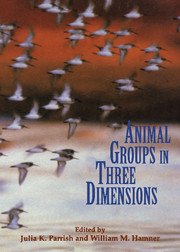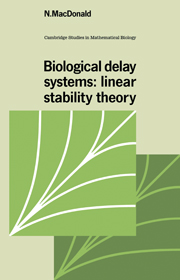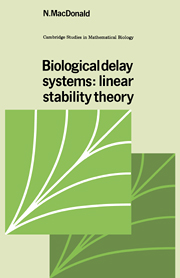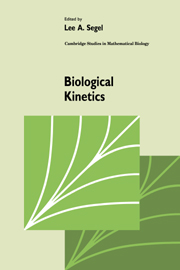Animal Groups in Three Dimensions
This book is about the ways in which many animals form groups; for instance, schools of fish, flocks of birds, and swarms of insects. Covering both invertebrate and vertebrate species, the authors investigate three-dimensional animal aggregations from a variety of disciplines, from physics to mathematics to biology. The first section is devoted to the various methods, mainly optical and acoustic, used to collect three-dimensional data over time. The second section focuses on analytical methods used to quantify pattern, group kinetics, and interindividual interactions within the group. The section on behavioural ecology and evolution deals with the functions of aggregative behaviour from the point of view of an inherently selfish individual member. The final section uses models to elucidate how group dynamics at the individual level creates emergent pattern at the level of the group.
- Four approaches covering fields from physics to biology
- First comprehensive overview of three-dimensional animal aggregation, from crustaceans to cetaceans
Reviews & endorsements
' … worthwhile book with something in it for everyone who is interested in animal groups.' Ethology
' … has definite possibilities for the imaginative production of project work at the undergraduate level, using some concepts of applied mathematics and many standard techniques of calculus and statistics.' Peter Giblin, The Mathematical Gazette
Product details
December 1997Hardback
9780521460248
402 pages
261 × 183 × 26 mm
1.04kg
104 b/w illus.
Available
Table of Contents
- 1. Unifying principles, galactic framework, and the holy grails of aggregation Julia K. Parrish, William M. Hamner and Charles T. Prewitt
- Part I. Imaging and Measurement:
- 2. Methods for three-dimensional sensing of animals Jules S. Jaffe
- 3. Analytical and digital photogrammetry Jon Osborn
- 4. Acoustic visualization of three-dimensional animal aggregations in the ocean Charles H. Green and Peter H. Wiebe
- 5. Three-dimensional structure and dynamics of bird flocks Frank Heppner
- 6. Three-dimensional measurements of swarming mosquitos: a probabilistic model, measuring system, and example output Terumi Ikawa and Hidehiko Okabe
- Part II. Analysis:
- 7. Quantitative analysis of animal movements in congregations Peter Turchin
- 8. Movements of animals in congregations: an Eularian analysis of bark beetle swarming Peter Turchin and Gregory Simons
- 9. Individual decisions, traffic rules, and emergent pattern in schooling fish Julia K. Parrish and Peter Turchin
- 10. Aggregate behavior in zooplankton: phototactic swarming in four developmental stages of Coullana canadensis (Copepoda harpacticoida) Jeannette Yen and Elizabeth A. Bryant
- Part III. Behavioural Ecology and Evolution:
- 11. Is the sum of the parts equal to the whole?: the conflict between individuality and group membership William M. Hamner and Julia K. Parrish
- 12. Why are some members more likely to be on the outside of the group?: Testing the evolutionary predictions William L. Romey
- 13. Costs and benefits as a function of group size: experiments on a swarming mysid Paramesopodopsis rufa fenton David A. Ritz
- 14. Predicting the three-dimensional structure of animal aggregations from functional consideration: The role of information Lawrence M. Dill, C. S. Holling and L. H. Palmer
- 15. Perspectives on sensory integration systems: problems, opportunities, and predictions Carl R. Schilt and Kenneth S. Norris
- Part IV. Models:
- 16. Conceptual and methodological issues in the modeling of biological aggregations Simon A. Levin
- 17. Schooling as a strategy for chemotaxis in a noisy environment Daniel Grunbaum
- 18. Trail following as an adaptable mechanism for popular behavior Leah Edelstein-Keshett
- 19. Metabolic models of fish school behaviour: The need for quantitative observations William McFarland and Akira Okubo
- 20. Social forces in animal congregations: interactive, motivational and sensory aspects Kevin Warburton.






